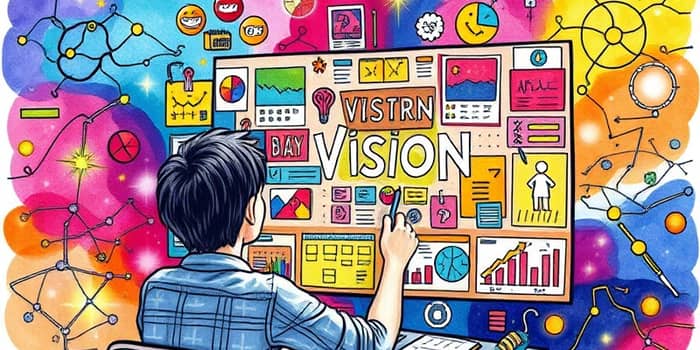
Staying motivated over months or even years requires more than sheer willpower. When goals stretch into the long term, momentum can fade and distractions multiply. Fortunately, research shows that visuals can sustain enthusiasm and turn distant ambitions into tangible realities.
By harnessing images, charts, and cues, you tap into powerful neural circuits tied to reward and emotion. In this article, we explore the science, tools, and real-world examples that prove visuals work—and we share practical steps to make them part of your daily routine.
Decades of neuroscience confirm that imagining success activates the same brain areas as living it. Functional MRI scans reveal that regions like the nucleus accumbens and ventromedial prefrontal cortex light up both during real rewards and during vivid mental rehearsal.
This dual activation leads to activate reward-related neural pathways, reinforcing the belief that a goal is achievable. It also boosts neuroplasticity, strengthening connections that support motivated behavior. In one study, students who performed process visualization—imagining every study step—scored 6 to 8 points higher on exams than those who only pictured the final result.
Visualization goes beyond daydreaming. It involves concrete elements you interact with daily. Here are some of the most effective methods:
Quantitative results are striking. Integrating specific visuals with measurable goals can boost performance by up to 25%, while visual mapping techniques improve retention rates by as much as 65%.
Visual methods shine when anchored in a clear framework. The SMART goal model aligns perfectly with visual cues:
- Specific: Use images that define exactly what you want to achieve.
- Measurable: Add charts or checklists to gauge progress.
- Achievable: Include realistic milestones that give you quick wins.
- Relevant and Time-based: Incorporate timelines or calendars to visualize deadlines.
You can also create a goal pyramid: position your ultimate long-term objective at the top, then layer micro-goals below. Surround each level with symbols of your core motivations—confidence, freedom, or impact. This design helps you convert abstract ambitions into tangible steps and keeps values at the forefront.
Tracking each milestone visually offers immediate feedback. A simple progress bar or sticker chart can spark a surge of satisfaction every time you update it. Regular visual reviews become motivating rituals, reinforcing habits through repetition.
Use your visual toolkit not only for big wins but also to navigate slumps. Before-and-after photos, streak trackers, and glowing badges remind you how far you’ve come, reigniting the drive to keep going.
Celebrities and professionals alike swear by visuals. Jim Carrey famously sketched a check for $10 million for “acting services rendered,” carried it in his wallet, and later landed a film contract that paid precisely that amount. Beyoncé has shared her multi-tiered vision boards, crediting visual mapping with guiding her toward record-breaking tours and business ventures.
In corporate settings, teams use interactive dashboards to track collective goals. The simple act of watching bars fill up or widgets light up fosters a shared sense of accountability and momentum. Employees report feeling more engaged and committed when progress is displayed visually.
You don’t need fancy software or an art degree to begin. Follow these actionable guidelines:
For teams, set up a shared dashboard where members can post updates, attach visuals, and cheer each other on. Public displays of progress inspire collective pride and reinforce commitment.
Long-term goals demand more than fleeting bursts of enthusiasm. By harnessing the power of visuals, you root motivation in your daily environment and neural circuitry. Images, maps, and boards become constant reminders of why you started and where you’re headed.
Whether you’re pursuing career growth, fitness milestones, or creative projects, integrating visuals can make the journey clearer, more engaging, and infinitely more rewarding. Embrace these techniques to maintain momentum, celebrate progress, and turn distant dreams into your next reality.
References













